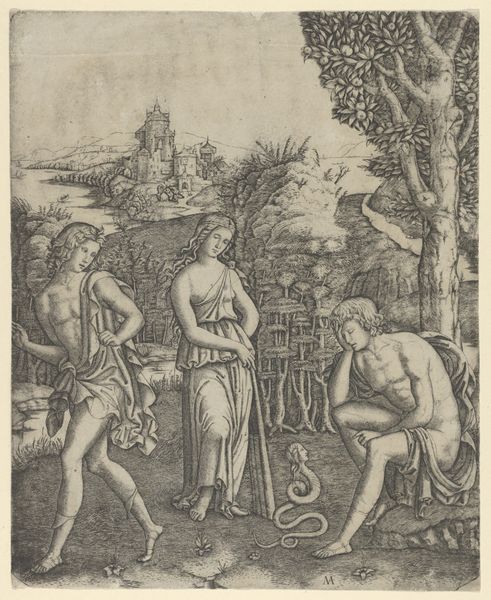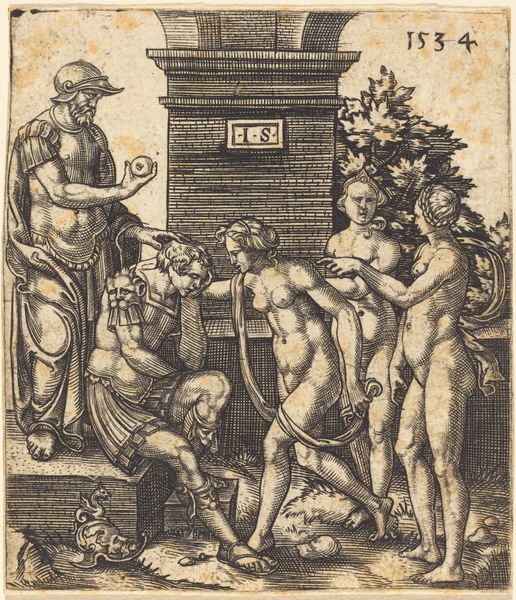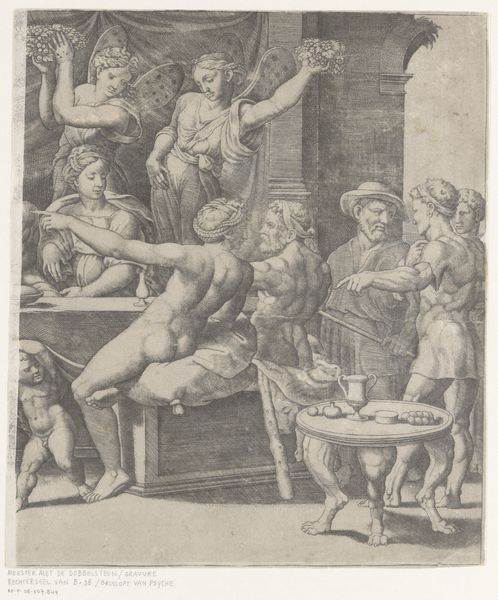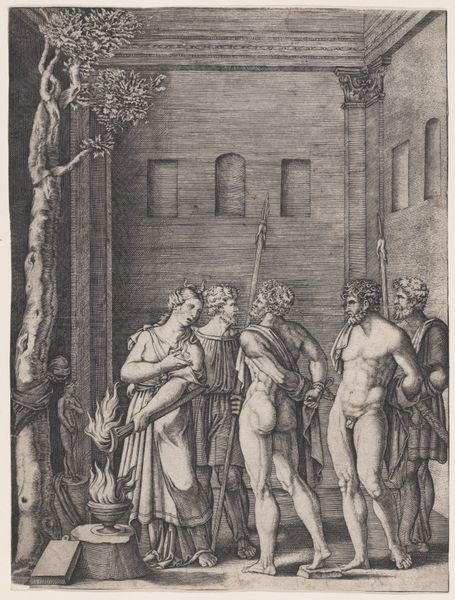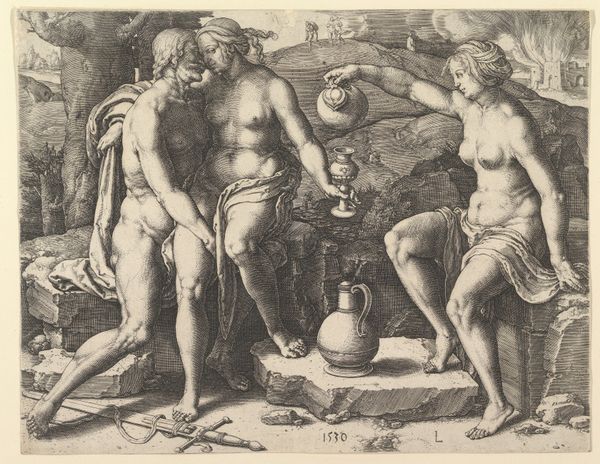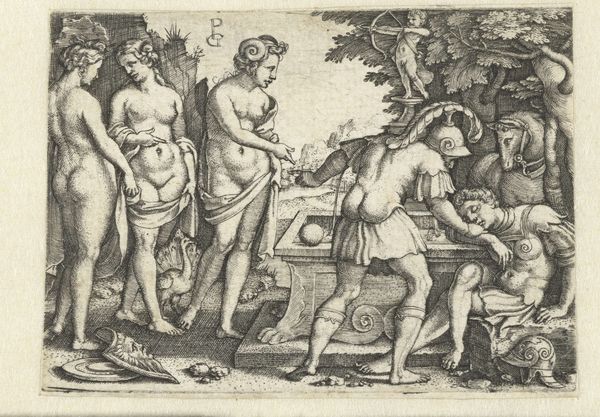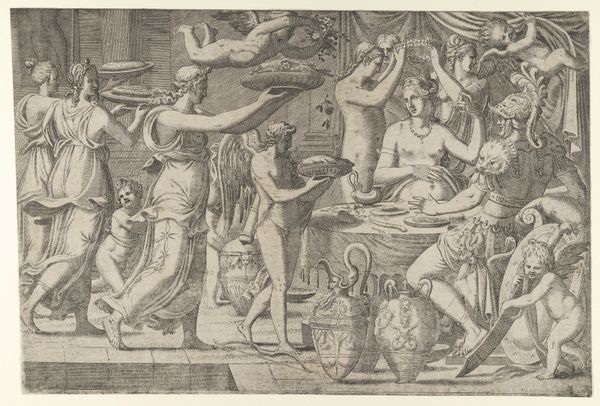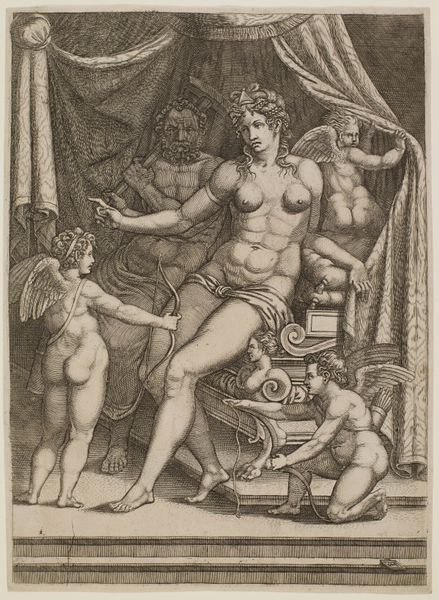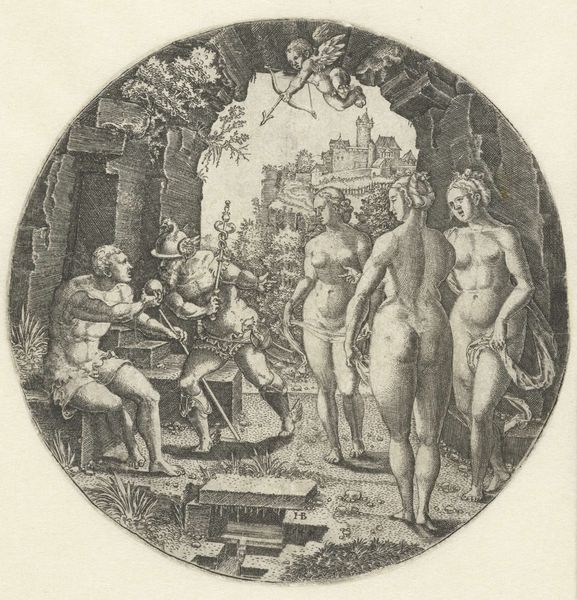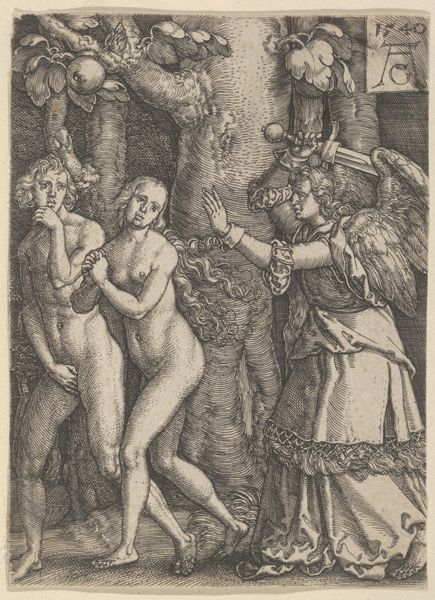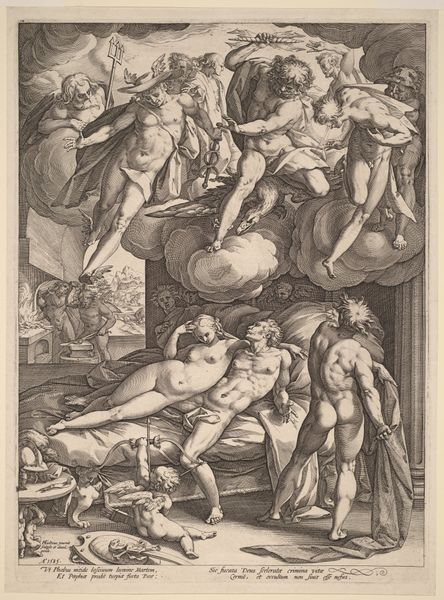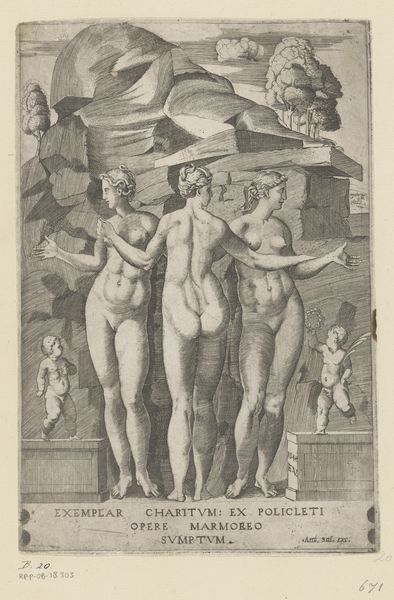
drawing, print, engraving
#
drawing
#
allegory
# print
#
figuration
#
genre-painting
#
history-painting
#
italian-renaissance
#
nude
#
engraving
Dimensions: Sheet (trimmed): 12 1/2 × 9 1/2 in. (31.7 × 24.2 cm)
Copyright: Public Domain
Curator: Hmm, the light almost feels trapped here, doesn't it? Like the scene itself is holding its breath. Editor: Indeed. We're standing before "Venus Bathing Attended by Nymphs," an engraving from sometime between 1535 and 1555. It’s currently held at The Metropolitan Museum of Art. The artist is Jean Mignon, someone whose biography has been pieced together almost entirely through their artistic output. Curator: Right. And, okay, stepping back, I see this crowded, almost claustrophobic composition...all these figures squeezed into what should be a luxurious, open space. The linework, too—it's so dense, creating this really tight, almost unsettling mood. I guess it clashes with the… frolicking, supposedly? Editor: "Frolicking" isn’t quite the word that springs to mind here either. I see something much more deliberate. Let's consider the form, for example: Mignon uses incredibly fine, controlled lines. Look how he renders the musculature of the figures. See, these aren’t just casual strokes; they meticulously build volume and highlight the contours. And then consider how the arrangement, that carefully arranged pyramid of bodies focuses the eye directly to Venus. It suggests both reverence and perhaps a critical lens to such mythological subject. Curator: Reverence, okay I grant you that. But also...a sense of discomfort, I think. Venus herself seems almost mournful, bowed, vulnerable. It is more than just simple homage—perhaps, it captures anxieties and tension surrounding Renaissance beauty and classical themes. This isn’t just a pleasant bathing scene, is it? It’s steeped in complex feelings and I think it hints to Mignon’s inner view. Editor: Perhaps you’re right about that discomfort. The allegory seems slightly twisted. There’s an element of unease and complexity under this Italian Renaissance treatment, it offers us some fascinating insight. I wonder what Mignon truly thought of these grand mythological narratives. Curator: And to me, it’s how those inner thoughts of his speak silently, so powerfully in what initially seems another standard mythological re-telling. Makes it so very personal. Editor: A fascinating glimpse then, into the visual style of a creative enigma, one where form serves the content, a method used for personal revelation through art.
Comments
No comments
Be the first to comment and join the conversation on the ultimate creative platform.
